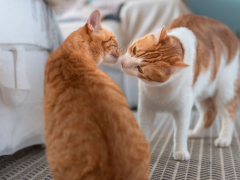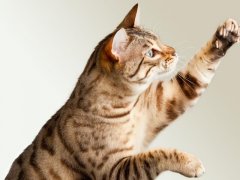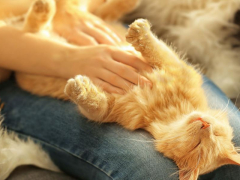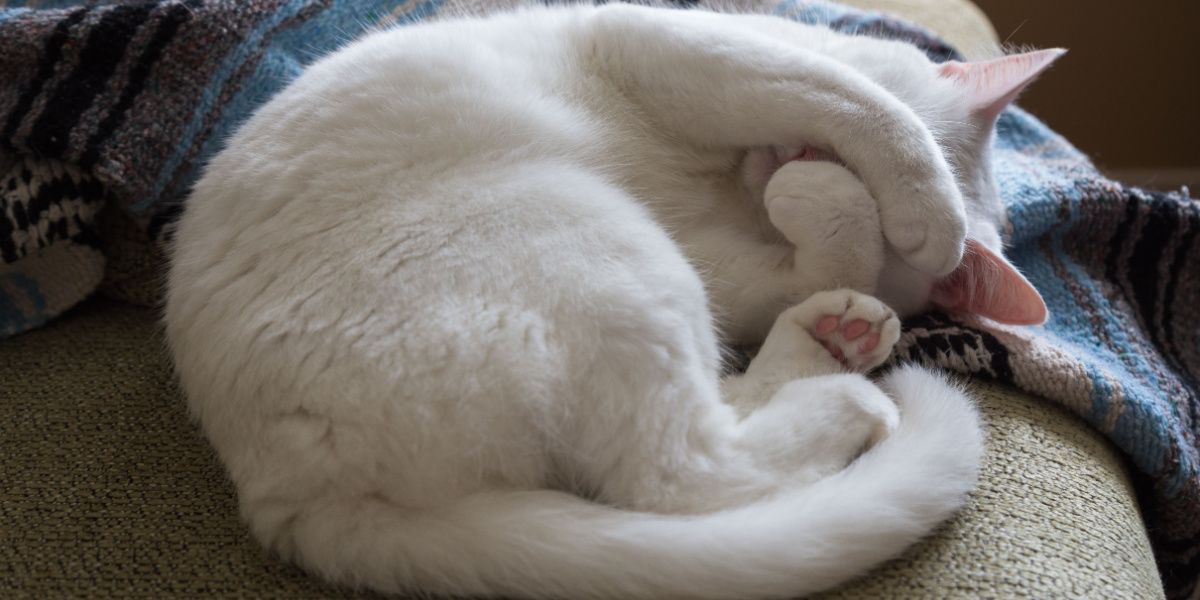
We love to watch our cats sleep, but have you ever wondered why they cover their face? It could be easy to assume that your cat covers their face while they sleep because they are simply just cute and cuddly creatures.
While it is extremely heartwarming to see your cat asleep like this, there are some very sensible and practical reasons why they like to cover their faces while they sleep: to block out light, for protection and for comfort. In this article, we’ll explore these scientific reasons behind this behavior, and learn a bit more about the science behind your cat’s sleep.
Reasons Why Cats Cover Their Face When They Sleep
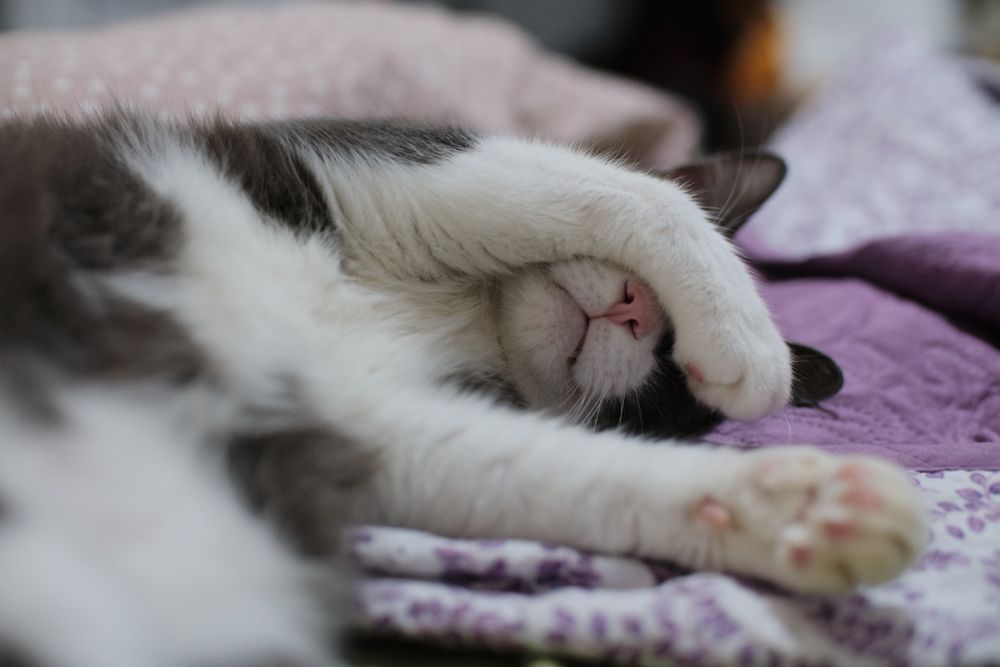
A cat sleeping with their face covered is often in a deep, restful sleep.
A Sense of Security and Comfort
Wild cats are both predators and prey – they hunt birds, mice, and other small mammals, but they are hunted by larger animals like coyotes, wolves, and leopards. Sleep tactics are essential to their survival – a sleeping cat is a vulnerable cat. So they have developed ways of staying secure and protected while getting the rest they need.
Cats like to cover their face when they sleep to help feel more secure – this is often referred to as ‘tenting’. When choosing your cat’s bed, pick something soft with high sides, or a cushion that they might like to use to help cover their face.
Cats also rely on their whiskers to help them navigate and hunt, so the whiskers are very sensitive. Covering them with their paws while they sleep helps them to relax and feel safe. It’s also thought that it may help cats to regulate their body temperature by keeping the tips of their noses warm and preventing them from losing their body heat.
To Block Out Light and Environmental Stimulation
We humans, use blackout curtains and turn the lights out when we want to sleep. Cats like to cover their eyes to block out the sun’s rays and other light sources. This helps them to rest into a deep sleep and avoid disturbance from their surroundings.
A Comfortable Position for Deep Sleep
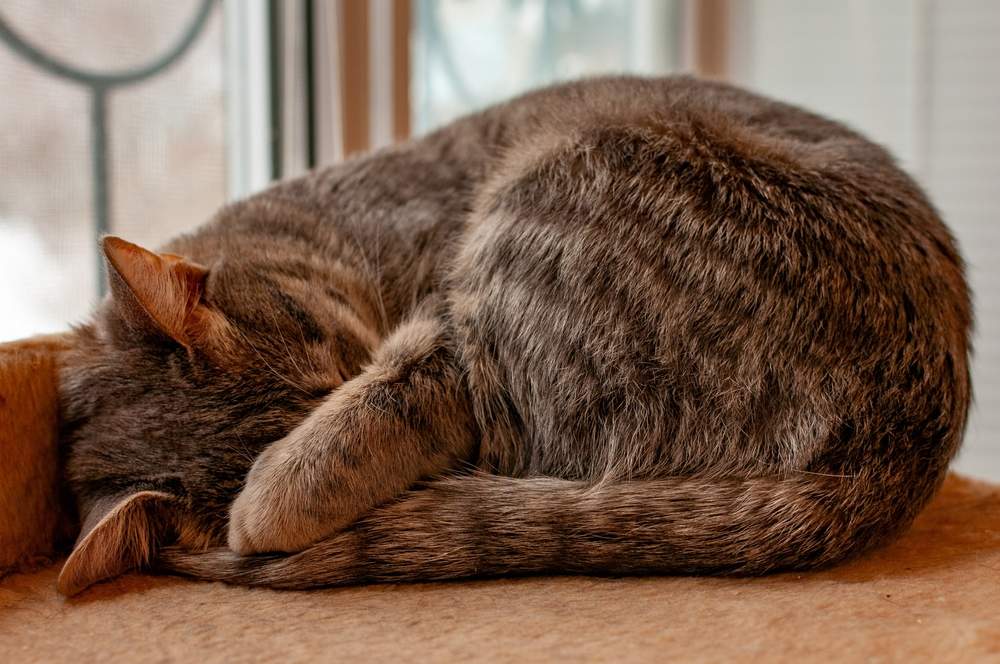
Cats are vulnerable when they sleep, so they often curl themselves into a safe and protected position.
Comfort is key to getting a good night’s sleep, and we all sleep better when we are in a toasty, cozy, and comfortable position with all the pillows and blankets we need. The same goes for cats, they sleep better when they are most comfortable. Cats live an active life, so conserving energy and getting plenty of rest is very important.
Typically cats sleep in the ‘lordosis position’ – with their back legs behind them and their front paws tucked under their chest. Cats drift off easily into sleep in this position. Covering the face with their paws helps them to prolong the cycle of deep sleep, get more rest, and conserve more energy.
Additional Facts About Cats and Sleep
All cat owners know that our pets love to sleep. Cats actually spend an average of 16 hours a day catnapping, that’s two-thirds of their life asleep! They do this to conserve energy. What you might not know is that, just like humans, felines experience REM (rapid eye movement) and non-REM phases of sleep.
Also, like humans, cats experience atonia while in the REM phases of sleep – a form of reduced muscle tone that causes temporary paralysis while they are dreaming. This is when you might spot your cat’s whiskers, ears, or tail twitching, or hear a few vocalizations.
This REM/dream phase typically lasts around 15 minutes before entering into non-REM sleep for a further 15 minutes, when the deepest rest period occurs. These cycles repeat throughout the night, so cats actually get much better sleep than we do!
Cats have three eyelids – an upper, lower, and third eyelid (nictitating membrane) whose primary function is to allow vision while also protecting the eyes. You might have noticed your cat sleeping, or half sleeping, with their eyes partly or fully open – the third eyelid is what helps them to get a little rest while also staying alert.
Cats cover their face to sleep in several ways, not just with their paws. Some cats press their face into your arm or body, or their bedding as well. It’s like their way of saying ‘do not disturb’ when they want to get some proper rest.
Cat Sleep Cycles:
Californian Vet Dr. Gary Richter has divided a cat’s sleep cycle into 4 stages:
- ‘Loafing’ – cats’ sleeping positions can tell us what type of sleep they plan to have. ‘Loafing’ is a typical, comfortable sleeping position where cats sleep with their paws tucked under their chest, looking ready to pounce. This is usually when they take one of their many cat naps of around 15-20 minutes throughout the day
- ‘The Zoomies’ – cats are crepuscular creatures, so dawn and dusk are their most active times of the day. This is when the instinct to hunt kicks in, or just a game, or to zoom around the house!
- Deep Sleep – usually this is the sleep that occurs during the night (after the pure exhaustion caused by the zoomies), when cats curl up, cover their face, and drift off into a deep and restful sleep
- ‘Morning Zoomies’ – after a good night’s deep sleep and a bit of breakfast, cats are ready for their next round of zoomies before taking a few short naps again throughout the day
Conclusion
As we’ve learned, there are several reasons why cats like to cover their face when they sleep, whether that’s using their paws or hiding underneath something. It gives out cats a sense of warmth and security, as when they hide their face they are hidden and protected from predators.
Cats are very private creatures, especially when they sleep. So next time you notice your kitty hiding their face or curled up cutely with their paws over their eyes, you know they are just enjoying a deep and restful snooze!
Related Conditions:
- 8 Most Common Cat Sleeping Positions and What They Really Mean
- Do Cats Experience Deep Sleep? Here’s What We Know
-
https://www.discovermagazine.com/planet-earth/do-cats-have-dreams
-
https://www.petmd.com/cat/behavior/why-do-cats-sleep-so-much
